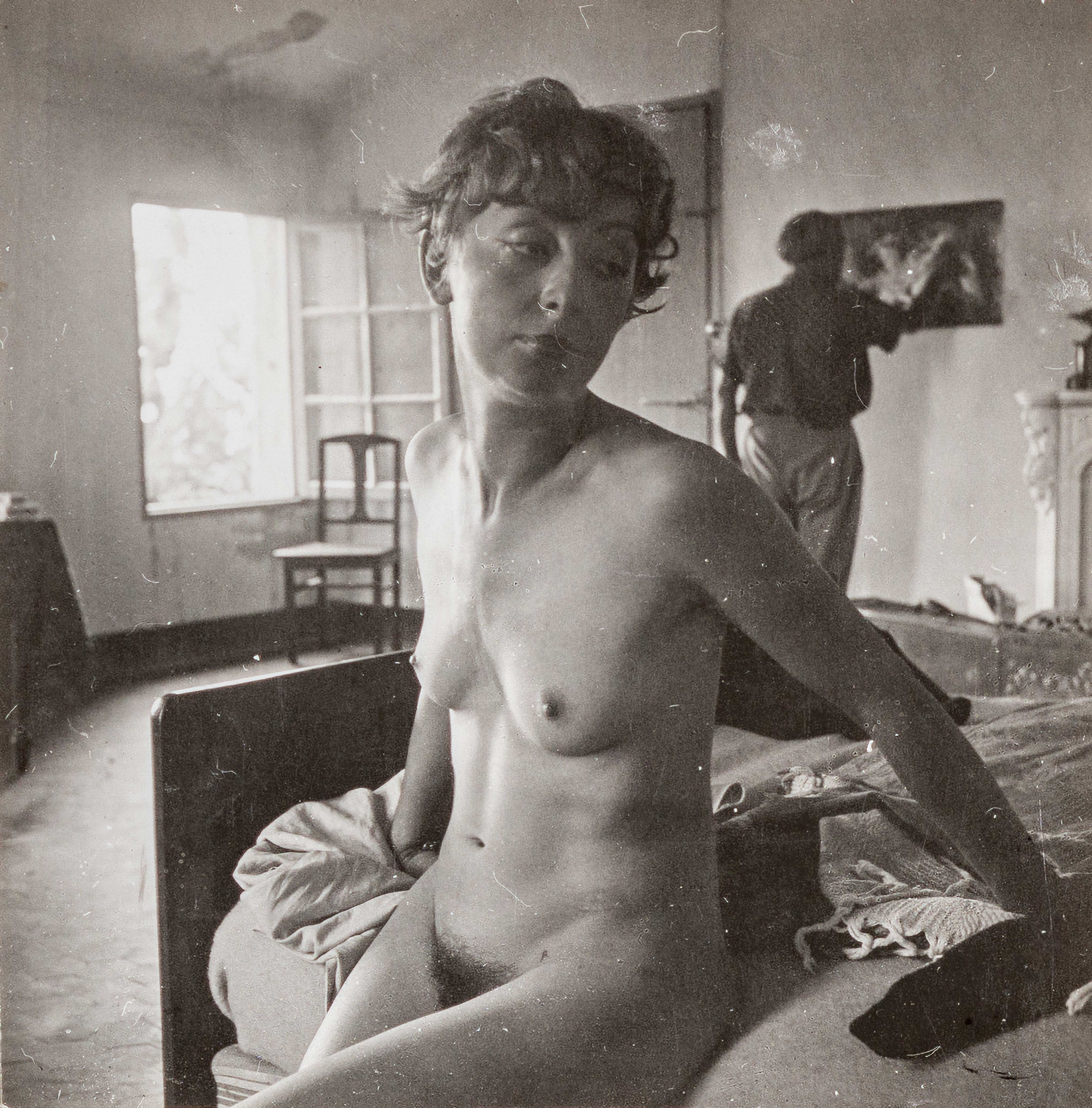Dora Maar
Contact Prints
October 2022
Huxley-Parlour Gallery
Extract ---
Huxley-Parlour are delighted to present an exhibition of contact prints by surrealist photographer, Dora Maar. Taken throughout the 1930s, the works in the exhibition provide an intimate encounter with Maar’s early photographic interests and her preoccupation with the subtle and uncanny. The exhibition anticipates her later foray into surrealism for which she is renowned today. Contact Prints is testament to her position as both an innovative photographer and important figure in twentieth-century Modernism.
Maar took pictures using a handheld, rolleiflex camera, the portability of which allowed her to take photographs quickly and with ease. Whilst surrealist photographers such as Eugène Atget and later, Brassaï, capitalised on the eeriness of empty, parisian streets to create surreal compositions, thinkers such as André Breton wrote surrealist texts exploring the uncanny quality of cosmopolitan living and its relationship to the psychogeographies of the mind. Similarly, the works in Contact Prints belie a perambulatory preoccupation with the city and the people that inhabited it.
Contact Prints demonstrates the beginnings of a surrealist oscillation between the banal and the absurd. Spanning unpeopled parisian rooftops, off-guard acquaintances, and sun-dappled bodies of open water, Maar’s photography is indiscriminate, capitalising on quiet, unseen detail. Her work displays a surrealist magnetism towards found objects and compelling juxtapositions in the everyday that would inform her later more experimental photomontage. Creating sheets of contact prints was how Dora Maar and her contemporaries previewed film negatives before deciding which photographs to print in the dark room. Conceptually, the contact print provides an intimate insight into Maar’s working process at an interim stage of the editing, selection, and printing process. The works are also materially immediate, each two by two inch print being the same size as the film negative itself.
Notable works in Contact Prints include Autoportrait à la Fenêtre, c. 1935 a self portrait of Maar in a Parisian window, and two works of Pablo Picasso painting - once in his studio in the Rue des Grands-Augustins, Paris, and once more informally, at the Hôtel Vaste Horizon, Mougins. During their relationship, Maar often documented Picasso at work - most significantly during the initial stages of Picasso’s renowned 1937 painting, Guernica. She went on to educate Picasso in key photographic methods, such as the cliché verre, or glass plate, technique.
In situ
![]()
Rosemonde Wilms avec Pablo Picasso Peignant en Arrière Plan dans sa Chambre à l'Hôtel Vaste Horizon, Mougins, Summer 1937.
Dora Maar
Extract ---
Huxley-Parlour are delighted to present an exhibition of contact prints by surrealist photographer, Dora Maar. Taken throughout the 1930s, the works in the exhibition provide an intimate encounter with Maar’s early photographic interests and her preoccupation with the subtle and uncanny. The exhibition anticipates her later foray into surrealism for which she is renowned today. Contact Prints is testament to her position as both an innovative photographer and important figure in twentieth-century Modernism.
Maar took pictures using a handheld, rolleiflex camera, the portability of which allowed her to take photographs quickly and with ease. Whilst surrealist photographers such as Eugène Atget and later, Brassaï, capitalised on the eeriness of empty, parisian streets to create surreal compositions, thinkers such as André Breton wrote surrealist texts exploring the uncanny quality of cosmopolitan living and its relationship to the psychogeographies of the mind. Similarly, the works in Contact Prints belie a perambulatory preoccupation with the city and the people that inhabited it.
Contact Prints demonstrates the beginnings of a surrealist oscillation between the banal and the absurd. Spanning unpeopled parisian rooftops, off-guard acquaintances, and sun-dappled bodies of open water, Maar’s photography is indiscriminate, capitalising on quiet, unseen detail. Her work displays a surrealist magnetism towards found objects and compelling juxtapositions in the everyday that would inform her later more experimental photomontage. Creating sheets of contact prints was how Dora Maar and her contemporaries previewed film negatives before deciding which photographs to print in the dark room. Conceptually, the contact print provides an intimate insight into Maar’s working process at an interim stage of the editing, selection, and printing process. The works are also materially immediate, each two by two inch print being the same size as the film negative itself.
Notable works in Contact Prints include Autoportrait à la Fenêtre, c. 1935 a self portrait of Maar in a Parisian window, and two works of Pablo Picasso painting - once in his studio in the Rue des Grands-Augustins, Paris, and once more informally, at the Hôtel Vaste Horizon, Mougins. During their relationship, Maar often documented Picasso at work - most significantly during the initial stages of Picasso’s renowned 1937 painting, Guernica. She went on to educate Picasso in key photographic methods, such as the cliché verre, or glass plate, technique.
In situ

Rosemonde Wilms avec Pablo Picasso Peignant en Arrière Plan dans sa Chambre à l'Hôtel Vaste Horizon, Mougins, Summer 1937.
Dora Maar